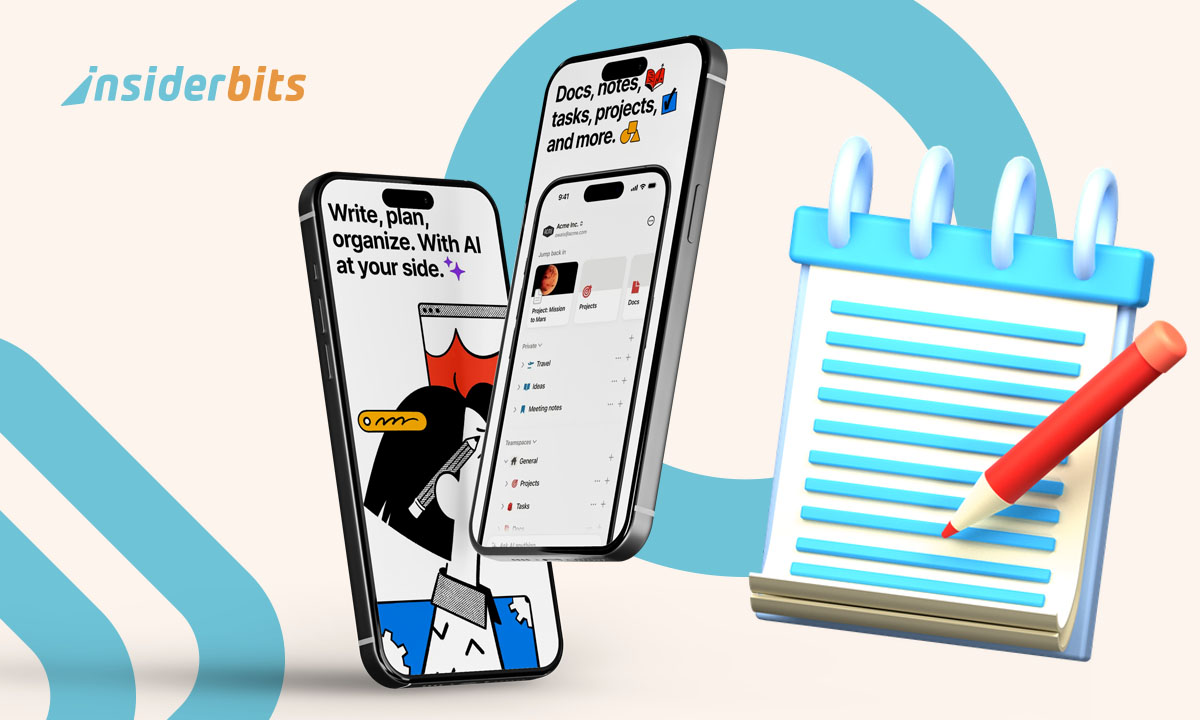Many people want to create a second brain that can be a reliable system to store ideas, plans, and useful knowledge is more than a productivity trend, it’s a necessity in the digital age. With the concept of building a Second Brain, you gain a structured way to save and connect everything you learn or create, turning information overload into an asset.
The idea behind creating a Second Brain is to develop an external memory system powered by apps like Notion, Evernote, or Obsidian. These tools act as digital extensions of your mind, helping you capture fleeting thoughts, organize tasks, and revisit essential insights when needed. These tools act as digital extensions of your mind, helping you to organize tasks, and revisit essential insights in ways your brain alone can’t manage efficiently.
- Brain-Boosting Gadgets: The Future of Neurotech Wearables
- Organize Your Routine For Free with the Notion
- The Best Smart Tools for Freelancers in 2025
Understanding the Concept of a Second Brain
To begin with, the term create a Second Brain refers to a personal system for organizing and retrieving information so your mind can focus on thinking, not storing.
It’s a digital framework that holds ideas, notes, insights, and tasks in a centralized space that mirrors your way of processing the world.
In summary, a Second Brain builds connections across topics using digital tools. It simulates how your real brain makes associations, but without the risk of forgetting or losing clarity over time.
This system is about offloading non-essential memory and letting your mental energy support creativity and problem-solving. With daily use, it becomes a trusted space for evolving your thinking and documenting progress.
It’s a method often used by professionals and creators who manage large amounts of content and want sustainable control over their knowledge environment.
Tools to Build Your Digital Knowledge System
Building a digital knowledge system to create a second brain starts with choosing tools that align with how you think and work. Platforms like Notion, Evernote, and Obsidian serve different preferences, each offering flexible structures to capture ideas and revisit them later.
First of all, Notion (iOS/Android) allows users to build interconnected databases and calendars with a visual interface that adapts to both structured and creative workflows.
It’s often chosen for its versatility and ability to house everything from daily tasks to lifelong learning archives.
4.8/5
Secondly, Evernote (iOS/Android) appeals to those who prefer simplicity and strong search features. It stores notes, images, voice memos, and web clippings in a streamlined interface that’s easy to manage on mobile or desktop.
4/5
Lastly, Obsidian (iOS/Android) stands out for users who enjoy linking thoughts with Markdown and visualizing knowledge through a graph view.
It emphasizes local storage and long-term control, which appeals to tech-savvy users or those building deep research archives.
4.1/5
Each of these tools supports the core principle of to create a Second Brain: giving your ideas a reliable digital home.
Organizing Information for Maximum Productivity
Efficient organization begins with clarity on what matters most to your daily goals and long-term projects.
The PARA (Projects, Areas, Resources, Archives) method, for example, offers a flexible way to sort digital content. Projects are action-driven tasks with deadlines, while Areas refer to ongoing responsibilities that evolve without a fixed endpoint.
Resources hold all the supporting knowledge, such as articles or quotes.
Archives, on the other hand, are where you store what’s complete or no longer active but still worth referencing later.
By mapping each piece of information to a clear purpose, your digital brain becomes easier to maintain and navigate.
Maintaining and Updating Your Second Brain
A powerful second brain thrives on consistent care, much like your physical workspace.
Without regular updates, even the most organized system risks becoming cluttered and less useful.
Set a weekly routine to review recent inputs and clear out irrelevant notes. This habit strengthens your mental clarity while preserving long-term value in your digital storage.
Also, Use daily touchpoints, like reviewing tasks or saving highlights, to keep the system alive. Let each new insight find its proper place while maintaining a clear boundary between action items and references.
With steady updates, your Second Brain evolves alongside your growth, offering mental relief every time you use it.
Benefits of Having a Second Brain Online
Storing ideas, speed, references, decisions in a digital environment reduces mental fatigue and sharpens creative output.
For example, when your thoughts are organized outside your head, you’re free to focus on execution instead of memory.
An online Second Brain supports fast retrieval, helping you find connections between past learnings and current challenges.
This structure fuels deep work and prevents valuable insights from getting lost.
It also becomes a long-term archive of personal growth, capturing everything from fleeting thoughts to finished projects. Revisiting past entries often reveals patterns you didn’t notice in the moment.
Ultimately, this digital system acts as your thinking partner, one that categorizes and evolves with you.
How to Create a Second Brain Online (and Outsmart Yourself) – Conclusion
To create a Second Brain online empowers you to manage information with purpose and intention, reducing overload and helping ideas mature over time.
The digital tools listed above serve as gateways to clearer thinking, whether you’re managing a business, studying, or crafting personal projects. They support organization, reflection, and long-term recall.
With consistent use, your Second Brain evolves into a creative engine that amplifies your productivity, supports smarter decisions, and keeps knowledge at your fingertips.
Related: AI-Powered Memory Boosters: Apps That Train Your Brain
Enjoyed this article? Save the Insiderbits blog to your favorites for the latest tools, creative tech tips, and photo editing breakthroughs.





